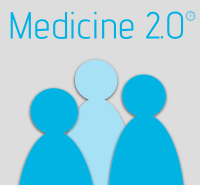Study of the ePatient as a provider of health content in the Internet
|
If you are the presenter of this abstract (or if you cite this abstract in a talk or on a poster), please show the QR code in your slide or poster (QR code contains this URL). |
Abstract
INTRODUCTION:
Millions internet users publish information about their daily life (1) and also about their health. There is little research evidence (2) about the usefulness and trustworthiness of the Patient Generated Content (PGC) and how it could affect the doctor-patient relationship. To study these aspects we designed a web-survey for chronic patients who are actively publishing in the Internet, gathering their views as consumers and creators of PGC.
METHODS:
A survey was designed and a private invitation to participate was sent to 122 patients. We searched for patients in Google (Web, Video and Blog Search Engines), Patient's Portals and the links found. The participants were informed and asked for their consent.
RESULTS:
28 completed surveys were submitted. 53% of the responders were female, the average age was 43,6 years (SD = 13) and 96% had at least some college studies.
The PGC got the highest rating in usefulness and trustworthy comparing with content from other authors (Pharmaceutical companies, Governmental Agencies, etc.). However, some responders think that some PGC is false (29%).
The PGC was especially helpful to find emotional support (93% agreed or strongly agreed) and to learn from experience of others (96%). PGC was considered also helpful to: prepare for an appointment, complement the doctor's information, manage better their health, acquire a healthy lifestyle and adjust medical treatment. Most of the patients (64%) have discussed the PGC found with their doctors and their reactions were mainly positive (33%) or neutral (55%).
In the previous 3 months, the mean of publishing post in blogs or personal webs was 23, 16 in other patient´s sites and 3 videos. All the patients publish information classified as confidential by the HIPAA, e.g. 75% publish full face photos. The most common medical information published is diagnosis (86%), treatment (79%), date of diagnosis (71%) and relapses (61%). Patients publish also about their healthcare professionals: general opinions (68%), names (25%), working place (21%) and complaints (17%). The 68% of the patient's doctors knew that they are publishing, and their reactions were positive (76%) or neutral (23%).
DISCUSSION:
PGC is highly rated in terms of usefulness and trustworthy. The reactions of the doctors to PGC were positive, both as consumers and as generators of PGC. However, in our opinion, there is a risk of damaging the doctor-patient relationship by using the web to complain about health professionals. As the rest of the health information providers the patients need ethical guidelines. This could be addressed by promoting the use of the well-known publishing ethical guidelines, such as HON, among the patients. Nevertheless, to adapt them to the needs of the patients, it is necessary to study more the PGC. In our opinion, the patients should be considered by the research community as providers and not mere consumers.
REFERENCES:
1. Lenhart A; et al. Content creation online. Pew Internet & American Life Project. 2008-04-30. URL:http://www.pewinternet.org/pdfs/PIP_Content_Creation_Report.pdf . Accessed: 2008-04-30.
2. Sujin K; et al. Characteristics of cancer blog users.
J Med Libr Assoc. 2007 October; 95(4): 445-450. doi:
10.3163/1536-5050.95.4.445.
Millions internet users publish information about their daily life (1) and also about their health. There is little research evidence (2) about the usefulness and trustworthiness of the Patient Generated Content (PGC) and how it could affect the doctor-patient relationship. To study these aspects we designed a web-survey for chronic patients who are actively publishing in the Internet, gathering their views as consumers and creators of PGC.
METHODS:
A survey was designed and a private invitation to participate was sent to 122 patients. We searched for patients in Google (Web, Video and Blog Search Engines), Patient's Portals and the links found. The participants were informed and asked for their consent.
RESULTS:
28 completed surveys were submitted. 53% of the responders were female, the average age was 43,6 years (SD = 13) and 96% had at least some college studies.
The PGC got the highest rating in usefulness and trustworthy comparing with content from other authors (Pharmaceutical companies, Governmental Agencies, etc.). However, some responders think that some PGC is false (29%).
The PGC was especially helpful to find emotional support (93% agreed or strongly agreed) and to learn from experience of others (96%). PGC was considered also helpful to: prepare for an appointment, complement the doctor's information, manage better their health, acquire a healthy lifestyle and adjust medical treatment. Most of the patients (64%) have discussed the PGC found with their doctors and their reactions were mainly positive (33%) or neutral (55%).
In the previous 3 months, the mean of publishing post in blogs or personal webs was 23, 16 in other patient´s sites and 3 videos. All the patients publish information classified as confidential by the HIPAA, e.g. 75% publish full face photos. The most common medical information published is diagnosis (86%), treatment (79%), date of diagnosis (71%) and relapses (61%). Patients publish also about their healthcare professionals: general opinions (68%), names (25%), working place (21%) and complaints (17%). The 68% of the patient's doctors knew that they are publishing, and their reactions were positive (76%) or neutral (23%).
DISCUSSION:
PGC is highly rated in terms of usefulness and trustworthy. The reactions of the doctors to PGC were positive, both as consumers and as generators of PGC. However, in our opinion, there is a risk of damaging the doctor-patient relationship by using the web to complain about health professionals. As the rest of the health information providers the patients need ethical guidelines. This could be addressed by promoting the use of the well-known publishing ethical guidelines, such as HON, among the patients. Nevertheless, to adapt them to the needs of the patients, it is necessary to study more the PGC. In our opinion, the patients should be considered by the research community as providers and not mere consumers.
REFERENCES:
1. Lenhart A; et al. Content creation online. Pew Internet & American Life Project. 2008-04-30. URL:http://www.pewinternet.org/pdfs/PIP_Content_Creation_Report.pdf . Accessed: 2008-04-30.
2. Sujin K; et al. Characteristics of cancer blog users.
J Med Libr Assoc. 2007 October; 95(4): 445-450. doi:
10.3163/1536-5050.95.4.445.

Medicine 2.0® is happy to support and promote other conferences and workshops in this area. Contact us to produce, disseminate and promote your conference or workshop under this label and in this event series. In addition, we are always looking for hosts of future World Congresses. Medicine 2.0® is a registered trademark of JMIR Publications Inc., the leading academic ehealth publisher.

This work is licensed under a Creative Commons Attribution 3.0 License.



